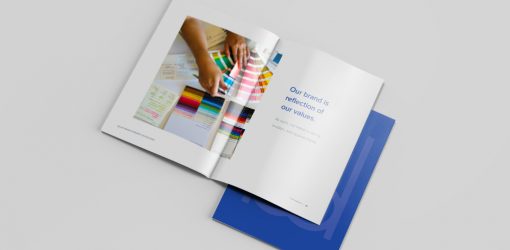
In a world where so much is changing so quickly—and sometimes drastically—it is difficult for brands to establish trust.
Edelman, the world-leading PR firm, just released their annual trust index. The theme for 2017? “Trust in Crisis.” Consumer trust in institutions—businesses, governments, NGOs, and the media—is down across the board with declines in trust in 21 out of 28 countries surveyed.
In such an environment, how do you get your customers to trust you? There is no single answer to this question. Delivering an exceptional product and service, doing what you say, minimizing surprises, and acting with integrity are all part of the equation. But when it comes to your brand, the most important component is consistency. Representing your company consistently over time and across media is essential for creating a sense of credibility and trust.
While it’s easy for an executive or marketer to understand this, reputations aren’t built on their acts alone. Every day, team members, partners, and suppliers all serve as active agents for your brand. In a world of non-stop social media and an increasingly decentralized workforce, that message is harder to harness.
Brand guidelines
Germane to every designer, brander, and marketer, brand guidelines are gaining relevance in the broader business community. Over the last two years at Blue Daring, they have come up in more customer conversations than in the last ten. And how could they not? With rapid changes in media democratizing the voice of a brand, providing guidance on communications has never been more important.
Sometimes referred to as brand standards, brand books, or style guides, good brand guidelines go beyond logos and colors to clearly lay out the principles and values that make a brand (and essentially an organization and culture) unique—ideas that are essential to maintaining authenticity during times of expansion, growth, and innovation.
Brand guidelines provide people and partners explicit guidance on how to talk about a business and/or idea, how to visually represent a brand on everything from a Tweet to a PowerPoint template, what colors and visual elements are aligned and connected, and, quite practically, what not to do.
What’s the impact?
Like most smart and useful organizational tools, brand guidelines don’t work by themselves. They require influential role models and ongoing training and support. They must be made accessible, easy to use and be culturally enforced. When that happens, they do amazing things.
They reinforce values
Brand guidelines take a brand off paper and into the real world. In doing so, they express and reinforce your brand’s core values—in everything from office design to corporate communications.
They help make team members brand ambassadors
No matter what department they work in, brand guidelines equip team members to communicate in a way that is aligned with your values and story—from face-to-face conversations to social media posts.
They empower partners
Brand guidelines serve as a valuable tool for freelancers, vendors, and other partners to quickly and effectively understand your values and culture so that they can meaningfully create alongside you.
They save time and money
By empowering team members (without design skills) to represent the brand cohesively, less time and money is spent outsourcing the design of informal, everyday documentation.
And, perhaps most importantly, they help cultivate trust
Brand guidelines’ most powerful contribution is that they help keep even the largest, most diverse organizations aligned, so that no matter how and through whom you connect, your brand feels familiar, authentic, and consistent.
While brand guidelines are usually created when a brand is initially designed, they don’t have to be. Even if your brand isn’t new, consider working with a branding team to develop guides for its use. Not only will they help you articulate what your brand is about, they will empower those who represent you—no matter how long they have—to do the same.
This post was written in collaboration with Melissa Ballate.
 I’m With the Brand
I’m With the Brand  Partnerships and Patience
Partnerships and Patience  Keeping the Spark Alive
Keeping the Spark Alive